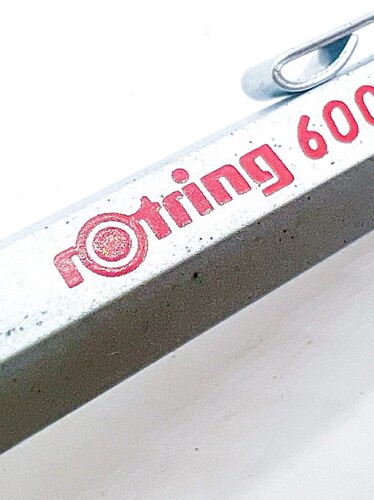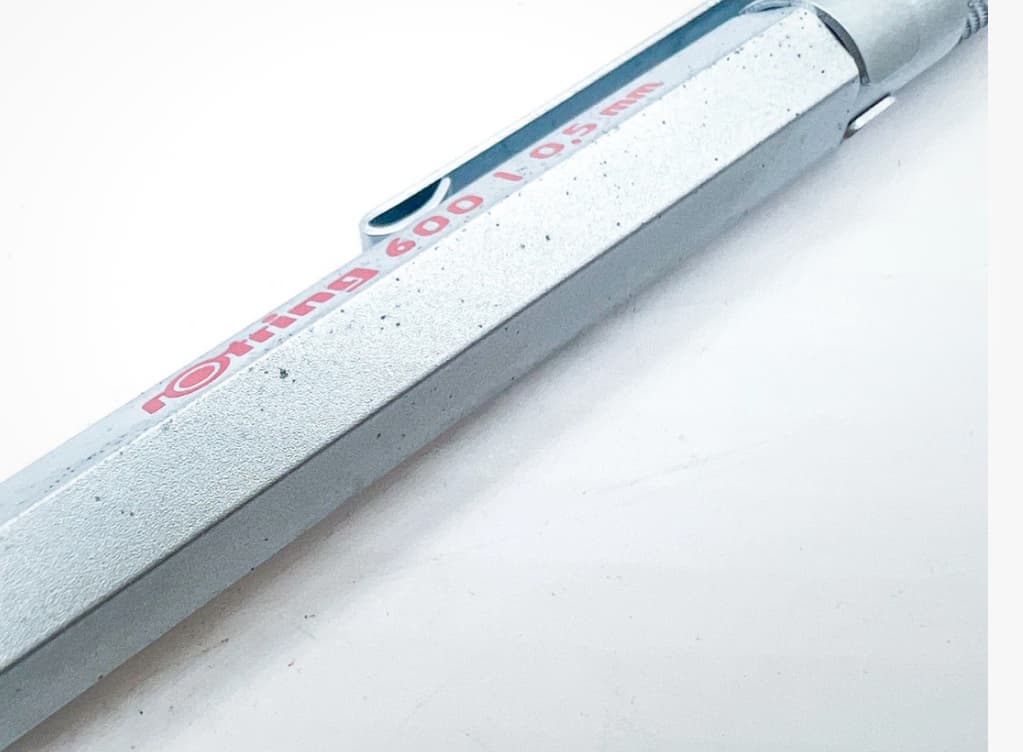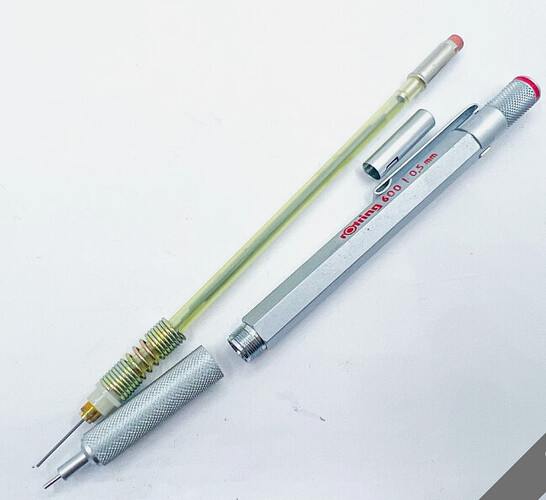Is there a W on it? Did you find out the model number when we all found it here?
@cytherian, what @Thomas is saying is that none of us knew the model number of the Pentel W-knock until March, when the first dozen (with original box) came up for sale on YAJ.
So we’re trying to clarify: Are you using the P1025 notation because you’ve learned it since March, or were you aware of the W-knock’s P1025 designation prior to that?
You’re better at words than me. ![]()
No, I didn’t have any awareness of the model number until I learned about it here. ![]()
IMHO, it’s not that great. I think the PSD5 is miles above it. And the Mitsubishi W-Knock is superior to the P1025.
Whoa, totally disagree here! The W-knocks are cheap and rely on plastic moulding inside the barrel for first-click calibration.
For clarification, Mitsubishi W-knocks have plastic barrels. The Mitsubishi stainless steel double-knocks—which I think you’re convoluting with their W-knock—are only superior in the sense they have steel-on-steel threading.
The knock mechanism itself has a fatal flaw that is evidenced in almost every specimen I’ve ever seen: When the tip is retracted, lead will “leak” out of the sleeve.
The Pentel W-knock exhibits no such sloppiness. The only criticism of the W-knock is the use of plastic threading, but as I’ve stated elsewhere, I believe Pentel’s engineers included design features to mitigate resin cracking at the joint (grooved flange on the resin and a free-floating interior sleeve which receives the plastic threading).
I also think the Pentel W-knock deserves props for its fat barrel, hairline finish, and nicely machined cap.
I have a Mitsubishi W-Knock skeleton to compare. Nice, strong, tight spring. Deployment is super smooth, no rubbing, no travel noise. I don’t know what you’re talking about by “lead leak.” Do you mean “slippage?” In my two examples the lead is firmly held, until you click to advance. When retracted, you can wiggle the pen, up/down & sideways… no lead slipping out.
The used Pentel P1025 example I have has a tight spring, but there’s a bit of a “scraping” feeling when extending the tip. Not smooth. The plastic body feels cheap. The clip sucks. The mechanism for deploying and retracting the tip doesn’t make me feel as confident as when using the W-Knock. Maybe when brand new the P1025 performs better? I disassembled and checked it. Don’t see any undue wear. The only cosmetic challenge is plating flaking off the clip, that I mentioned earlier.
Old Pixie - before and after using Bar Keeper’s Friend on the clip only. Instructions say avoid plastic so I removed the clip and did not have the BLF in contact with the metal for more than a minute at a time, rinsing thoroughly each time.
Just took 3 to get this result.
Dude, looks great!
I recently won an auction (Elton) for an early 600 (generation 3 or 4 - need to see the cap) that is in pretty poor shape. It was one of those poor judgment moves where I put a $15 bid, not expecting to win. But hey - this dog is mine now so I better take care of it. It shipped about a week ago so should be here in a week or less.
I’m kicking around the idea of making a “restoration video” and clean this up with some Bar Keepers Friend, since I’ve had such good success with it in the past.
I wanted to see if anyone here had any feedback, comments, hints, or warnings, etc. The label is pretty clear about not using it on painted surfaces, so I’ll be extra careful when working near the logo. Any other suggestions?
Well, it is possible it may clean up well with a little work. I’d mask off the label for the main cleaning with Bar Keeper’s Friend. After that, remove the label tape and use a cut-down cotton swab to work on the rest, to be careful not to scrub off the label. You might want to try making a Bar Keeper’s Friend paste, then put little dabs of it on the rust dots that are near the label.
You’re the master of cleaning pieces. Don’t second-guess yourself, Homie. ![]()
ahh thanks man



